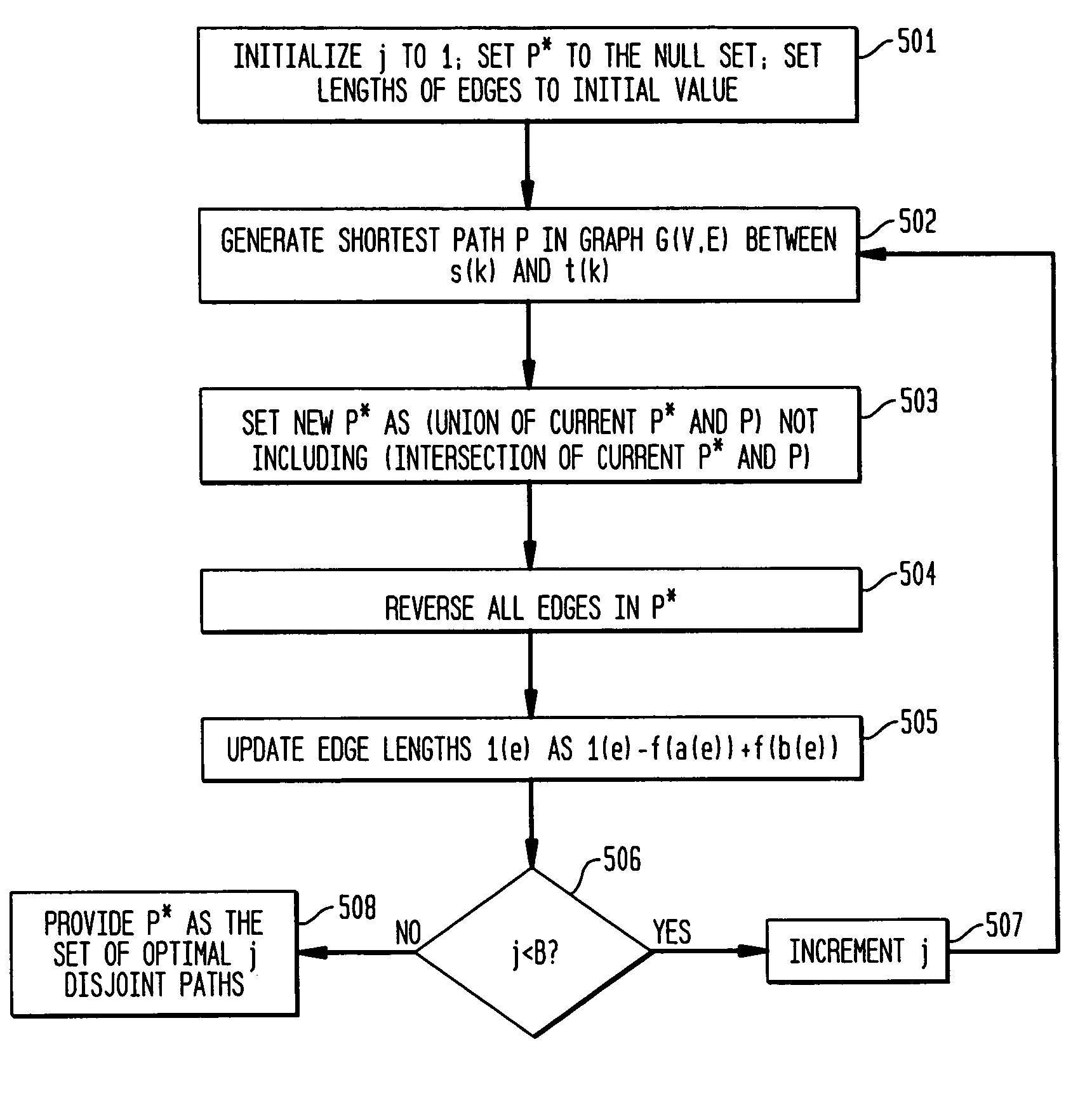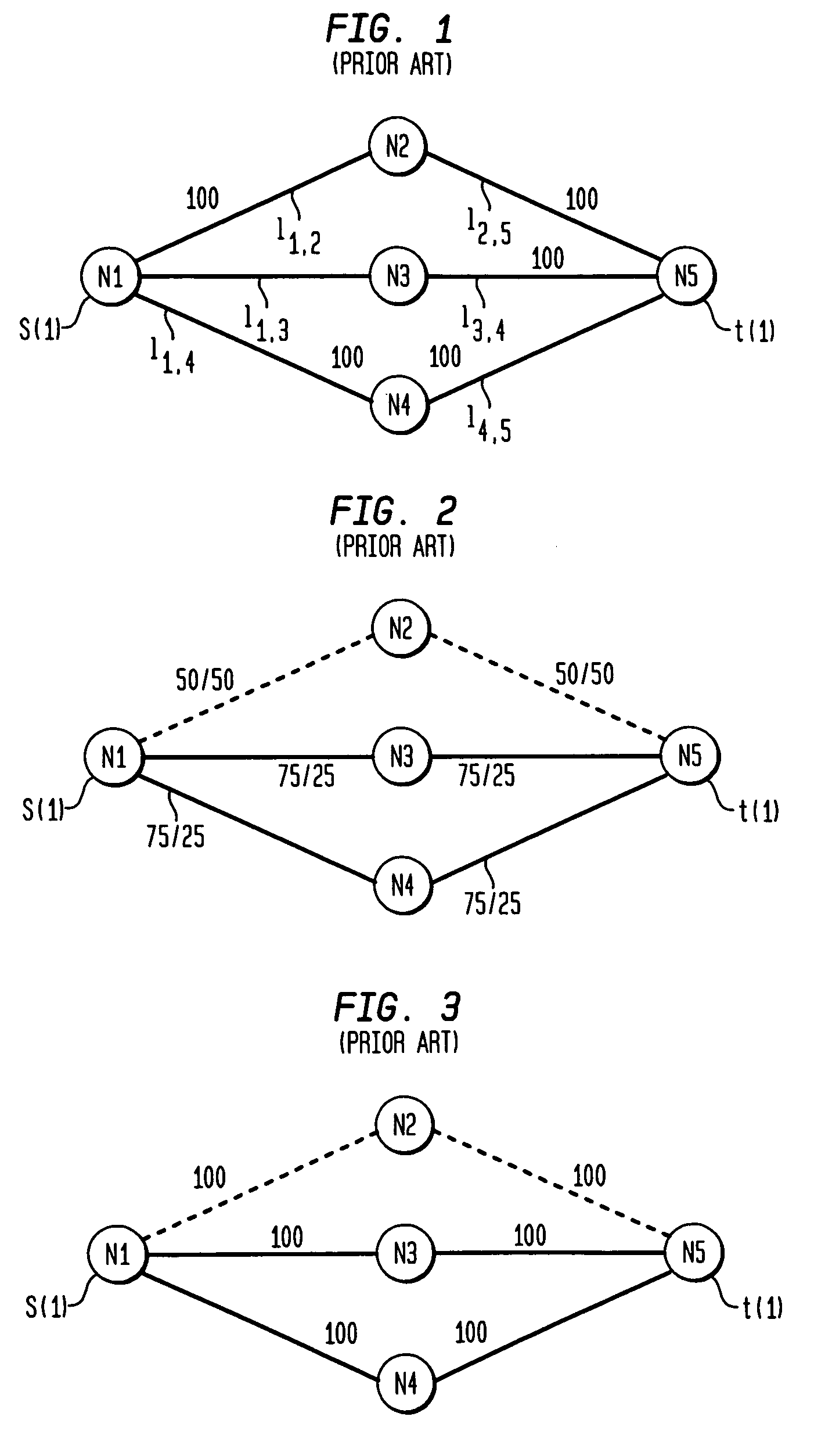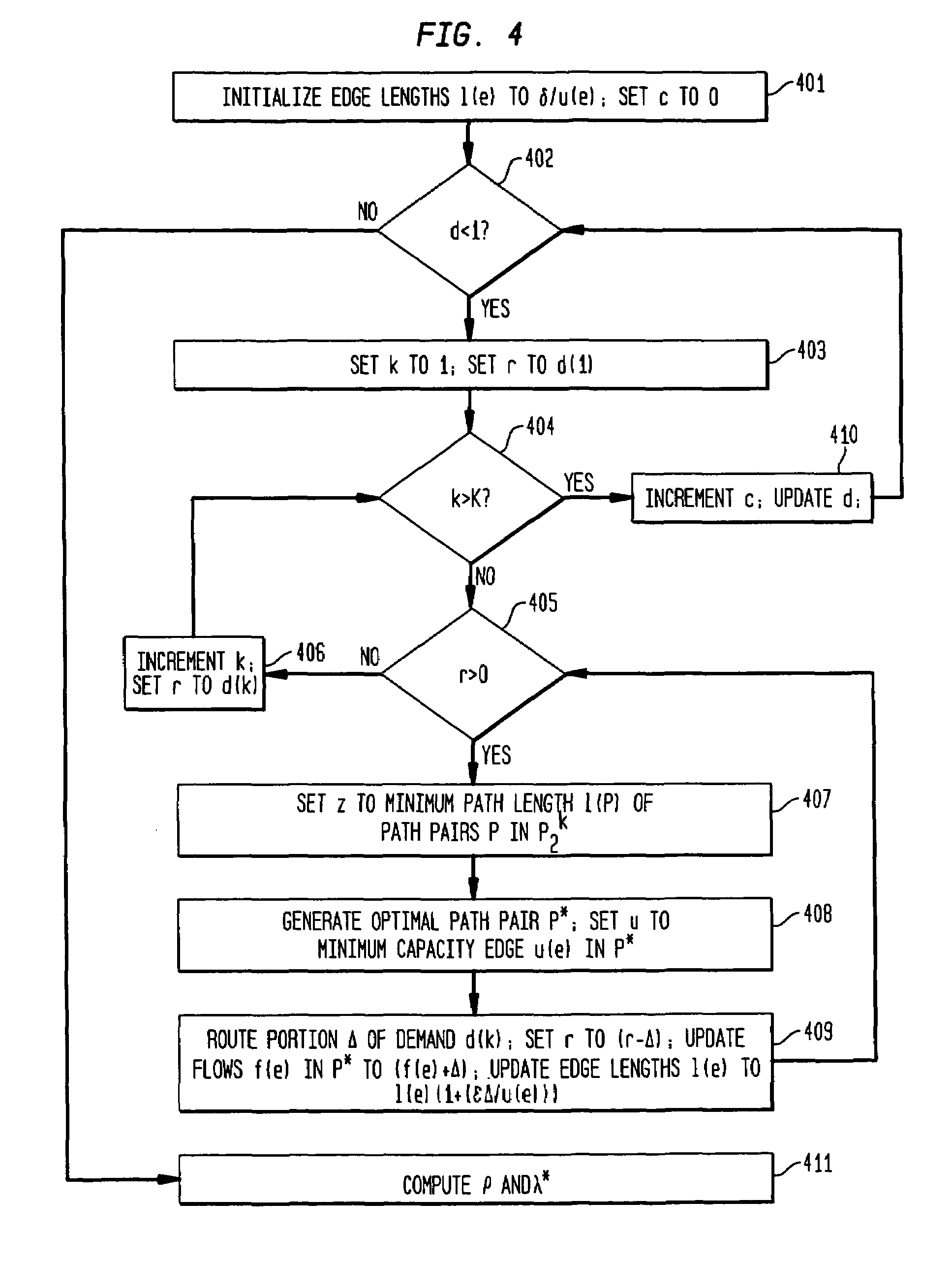Capacity allocation for fast path restoration
- Summary
- Abstract
- Description
- Claims
- Application Information
AI Technical Summary
Benefits of technology
Problems solved by technology
Method used
Image
Examples
Embodiment Construction
[0023]The following definitions may aide in an understanding of the present invention. An optical network of nodes and links may be modeled as a directed graph G(V,E), where V is a set of vertices representing the nodes of the network (e.g., optical switches) and E is a set of edges representing the (e.g., optical) links connecting the nodes. One or more fast path restorable (FPR) connections are routed between K source-destination node pairs, where each of the source-destination node pairs along with its demand is termed a “commodity.” The terms s(k) and t(k) denote the source node and destination node for the kth commodity, respectively, and the term d(k) denotes the corresponding demand for the kth commodity. Thus, for the kth commodity, d(k) units of flow are to be routed between s(k) and t(k) The set Pjk is the set of j disjoint paths between s(k) and t(k). A path set PεPjk (“ε” is the mathematical term “is an element of”) if P comprises j edge disjoint paths between the nodes ...
PUM
 Login to view more
Login to view more Abstract
Description
Claims
Application Information
 Login to view more
Login to view more - R&D Engineer
- R&D Manager
- IP Professional
- Industry Leading Data Capabilities
- Powerful AI technology
- Patent DNA Extraction
Browse by: Latest US Patents, China's latest patents, Technical Efficacy Thesaurus, Application Domain, Technology Topic.
© 2024 PatSnap. All rights reserved.Legal|Privacy policy|Modern Slavery Act Transparency Statement|Sitemap



